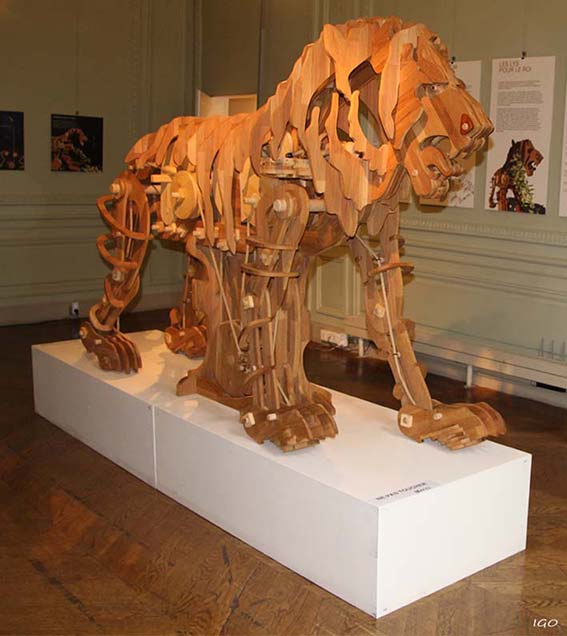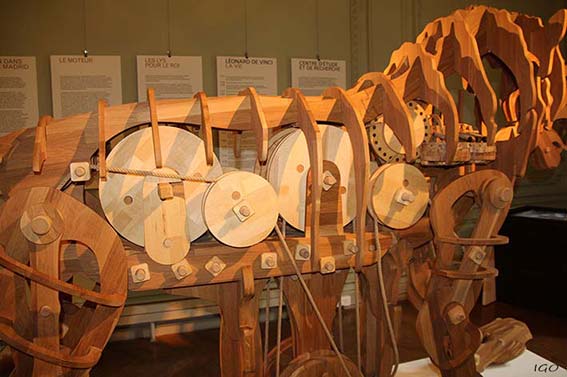 - Welcome - Masterpieces
- Welcome - Masterpieces
Masterpieces
The masterpiece represents the completion of an apprenticeship for the craftsman by mastering all the techniques of his trade. Crafting a work of art was fundamental to earning a Master of Arts title in one's guild. The term masterpiece can also designate an exceptional work made by different craftsmen with the coordination of their specialties.
![]()
Amiens cathedral
Amiens Cathedral is a masterpiece in many respects and is the largest cathedral in France. This monument, whose construction began in 1220, celebrated its 800th anniversary in 2020 and is listed as a historical monument by the U.N.E.S.C.O.
It endured the destruction caused by the two world wars and the revolution. This postcard from the Second World War, which shows the monument surrounded by a huge field of ruins, is well-known to the people of Amiens. Amiens train station, a few meters away, was also bombed during the First World War.
"Notre-Dame d'Amiens bears the history of a people, a city, a department, and a region" as Bishop Boulleret evokes in the book entitled "Amiens, the grace of a cathedral". (in French only). M. Viollet-le-Duc defined it as major construction of Gothic art, and M. Ruskin evoked a Bible.
Artisans with technical expertise worked on this monument, which defies the laws of weightlessness. 750 sculpted statues adorn the exterior facades, and more than 4,000 figures are depicted in the stalls.
"As far as I know, nothing so beautiful had been carved into the good trees of any country in the world." wrote John Ruskin, inspired by these 16th-century sculpted stalls, “Under the hand of the sculptor, the wood seems to have molded like clay, to have bent like silk, to have grown like living branches, to have sprung like a living flame”. These choir stalls are an interesting testimony to the life of the 16th century. For instance, the baker, the apothecary, the architect, the schoolmaster, the greengrocer, the woodworkers in different disciplines, the bagpipe player, and even the winemaker holding a bunch of grapes.
These carved stalls emerged in the 16th century in France, and Europe in the cities of Windsor, and Westminster in the United Kingdom, Louvain in Belgium, Toledo in Cordoba, Padua in Spain, Münster in Germany, and the Aosta Valley in Italy.

The King's desk
Cabinet makers, inlayers, bronze workers, engravers, gilders, watchmakers, and locksmith workers, have worked together to craft this desk. It was designed by two exceptional cabinetmakers, Jean-François OEBEN and Jean-Henri RIESNER, in the 18th century. Master artisans collaborated to create priceless masterpieces.
The original is exhibited at the Palace of Versailles, and a copy is in the Wallace Collection in London. The roll-top lid and hidden drawers are equipped with ingenious mechanisms. It is the most known achievement in the history of French furniture.
The mechanical lion of Leonardo da Vinci
An ingenious mechanism composed of several parts and cogs makes it possible to operate this automaton, designed by Leonard, and whose original was presented to King Francis in 1515. It was a prodigious achievement for this period.
Researchers from the Leonardo da Vinci Museum in Milan succeeded in reconstructing this replica. A copy of Leonard's codex, rediscovered in Madrid in 1965, contains some notes on this project.
This 3-meter-long model was exhibited in 2019 in Paris to honor the memory of the genius, who died 500 years ago in Amboise in 1519. He was born in 1452 in the town of Vinci, situated 45 km west of Florence. He lived in the Loire Valley for the last years of his life.
Another automaton was made for Château du Clos Lucé 10 years ago by M. Renato Boaretto, an Italian artisan.
The Louvre museum organized an exhibition at the end of 2019. The digital version of the Madrid Codex is available on the BNE National Library of Spain website.


Leonardo's Lion - Cultural Institute - Italian Embassy in Paris
The Roentgens Secretary Cabinet
Among the remarkable pieces is a writing cabinet with an incredibly sophisticated mechanism designed by the cabinet maker David Roentgen (1743–1807).
It had been realized, with many secret compartments accessible with the push of a wisely positioned button. He made other pieces of furniture with elaborate mechanisms.
This piece of furniture, better known under the name of the Berlin secretary cabinet now, is displayed at the Kunstgewerbemuseum.
The table of Teschen
The Teschen table is a table made by Johann Christian Neuber, a well-known goldsmith of the 18th century. He was based in Dresden, where he worked as a mineralogist.
This table was offered to Baron de Breteuil as a symbol of the Treaty of Teschen signed in 1779, ending the war of Bavarian Succession. His diplomatic action was aimed at stopping the war between Austria and Prussia.
It is a piece of bronze silverware, made with fine crimping work, embellished with a varied mosaic of fine stones and Saxony porcelain medallions, painted by Johan Eleazar Schenau.
This table was exhibited before in Dresden, New York, and Paris, and it was acquired, by the Louvre Museum, with the funding of several European public and private donors. It has been on display at the Louvre-Lens Museum since December 2017.

